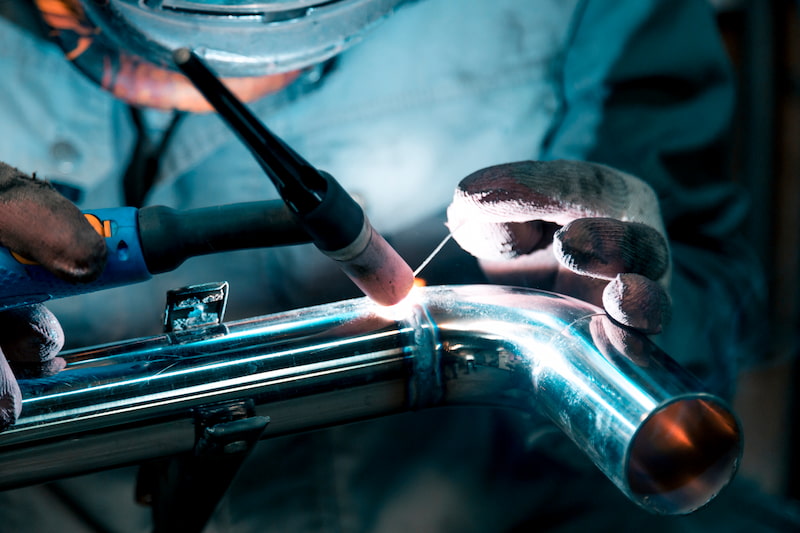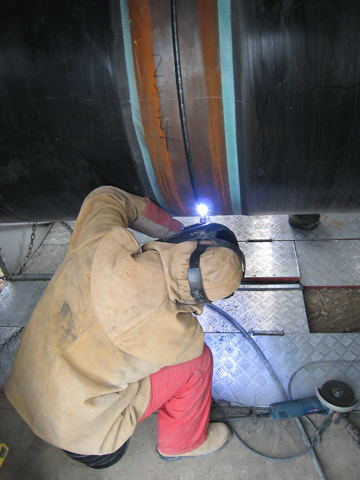Montana Mobile Welding and Repair Welding shares strategies on addressing heat distortion effectively
Common Welding Repair Work Issues and How to Address Them Efficiently
Welding repair services typically encounter a variety of issues that can threaten the integrity of the last item. Common problems include inadequate infiltration, porosity, and misalignment, amongst others. Each issue provides one-of-a-kind difficulties that require specific techniques for resolution. Comprehending these issues is necessary for welders intending to enhance their results and abilities. This discussion will certainly check out these usual welding repair issues and efficient approaches to address them.
Poor Infiltration
Inadequate penetration happens when the weld metal fails to completely fuse with the base product, resulting in weak joints and possible structural failures. This issue typically originates from not enough warm input, incorrect electrode angle, or improper welding speed. Welders may come across insufficient infiltration as a result of a miscalculation of the needed parameters for a specific product thickness or type. In addition, contamination on the base product's surface can impede reliable bonding, worsening the trouble. To deal with inadequate infiltration, welders must assure appropriate settings on their tools and maintain a tidy work surface area. Normal assessment of welds is recommended to determine any type of deficiencies early, allowing for timely corrections and the prevention of endangered structural stability in bonded assemblies.
Porosity
Porosity is a typical problem in bonded joints that materializes as small gas bubbles entraped within the weld metal. This problem can compromise the honesty of the weld, causing reduced stamina and possible failure under anxiety. Belgrade Welding. Porosity normally develops from contamination, dampness, or incorrect welding strategies, which allow gases to leave into the liquified weld swimming pool. To address porosity, welders need to assure correct surface prep work, preserve a clean functioning setting, and utilize suitable welding criteria. Additionally, selecting the best filler product and protecting gas can minimize gas entrapment. Normal assessment and testing of welds can aid identify porosity early, assuring prompt restorative actions are taken, consequently maintaining the quality and integrity of the welded framework
Imbalance
Imbalance in welding can develop from numerous factors, including improper setup and thermal growth. Recognizing the origin is important for effective resolution. Numerous improvement methods are readily available to straighten components and assure architectural integrity.
Sources of Misalignment
Welding imbalance frequently stems from a variety of underlying issues that can endanger structural stability. One primary cause is incorrect fit-up of components before welding, which can bring about gaps and uneven surface areas. Variants in thermal growth throughout the welding procedure can likewise lead to distortion, specifically if the products being signed up with have different coefficients of development. Additionally, inadequate securing and fixturing might fail to hold components securely in position, resulting in movement throughout welding. Poorly conserved devices, including welding makers and tools, might present inconsistencies in the weld bead, additional adding to imbalance. Ultimately, operator error, originating from not enough training or experience, can likewise play a substantial function in developing misaligned welds.
Correction Strategies Available
Attending to imbalance efficiently needs a mix of restorative methods tailored to the details concerns handy. One usual technique is making use of jigs or fixtures to hold elements in the right placement during welding, guaranteeing consistent placement. Additionally, preheating the materials can help decrease distortion and boost fit-up. For considerable imbalance, mechanical adjustment strategies, such as using hydraulic jacks or clamps, can be utilized to deal with the placement prior to welding. Post-weld warm therapy may additionally be necessary to soothe stresses brought on by misalignment. Ultimately, careful inspection and change throughout the setup phase can protect against misalignment issues from becoming significant issues, promoting a smoother welding procedure and improving overall architectural integrity.
Distortion
Distortion is an usual difficulty in welding that can develop from various aspects, including unequal cooling and heating. Recognizing the reasons for distortion is important for carrying out reliable prevention methods. Addressing this issue not only boosts structural stability however likewise enhances the total high quality of the weld.
Causes of Distortion
When subjected to the you could try here intense warm of welding, products commonly go through modifications that can cause distortion. This sensation mostly arises from thermal development and contraction throughout the welding process. As the weld location warms up, the product expands; upon cooling, it contracts, which can create inner tensions. Furthermore, uneven home heating throughout a workpiece can intensify these stress and anxieties, leading to warping or bending. The kind of material likewise plays a significant duty; steels with varying thermal conductivity and coefficients of growth may react in different ways, bring about uncertain distortions. Moreover, poor joint style and insufficient fixturing can add to misalignment during welding, increasing the likelihood of distortion. Understanding these causes is important for reliable welding repair service and prevention methods.
Prevention Techniques
Efficient avoidance techniques for distortion during welding concentrate on controlling warm input and guaranteeing correct joint design. Keeping a constant warm input helps to decrease thermal development and contraction, which can bring about distortion. Utilizing techniques such as pre-heating the workpiece can also minimize the temperature gradient, promoting consistent home heating. In addition, selecting ideal joint styles, such as T-joints or lap joints, can enhance stability and lower anxiety focus. Implementing correct fixturing to safeguard the work surfaces in position better help in preserving placement throughout the welding procedure. Staggered welding sequences can distribute warmth much more equally, preventing localized distortion. By applying these description methods, welders can substantially decrease the likelihood of distortion and improve the overall quality of their welds.
Cracking
Breaking is a typical problem experienced in welding fixings, frequently arising from different factors such as inappropriate air conditioning rates, material choice, or inadequate joint prep work. The event of fractures can greatly endanger the integrity of the weld, bring about prospective failures during procedure. To address this issue, welders need to first examine the source, guaranteeing that materials work and appropriately selected for the particular application. In addition, managing the cooling rate throughout the welding procedure is necessary; rapid cooling can cause stress and result in fracturing. Appropriate joint style and prep work additionally add to reducing the risk. Implementing these strategies can enhance weld top quality and resilience, inevitably lowering the probability of cracking in ended up weldments.

Insufficient Fusion
A substantial problem in welding repair work is insufficient blend, which happens when the weld metal does not properly bond with the base material or previous weld passes - Fabrication. This issue can result in weaknesses in the joint, possibly jeopardizing the integrity of the welded structure. Factors adding to insufficient blend consist of insufficient warm input, improper welding strategy, and contamination of the surfaces being signed up with. To resolve this concern efficiently, welders company website need to ensure correct pre-weld cleansing and surface preparation, as well as adjust their welding specifications to attain ample penetration and blend. Regular examination throughout the welding procedure can also assist identify incomplete blend early, enabling for prompt corrective procedures to enhance the general high quality of the weld
Overheating
While welding fixings can boost structural stability, overheating provides a considerable challenge that can lead to material destruction. Excessive heat throughout welding can change the mechanical homes of steels, leading to lowered toughness, increased brittleness, and bending. This phenomenon is especially crucial in high-stress applications where structural integrity is vital. Determining getting too hot can entail visual assessments for discoloration or distortion, as well as checking temperature throughout the welding procedure. To alleviate the threats connected with overheating, welders ought to use proper strategies, such as controlling warm input, adjusting traveling rate, and utilizing appropriate filler products. Furthermore, executing pre- and post-weld warm therapies can aid restore material residential properties and boost the overall top quality of the repair work, making certain long-lasting efficiency and security.
Regularly Asked Inquiries
What Are the Usual Indications of a Welding Flaw?

Exactly How Can I Evaluate My Welds for High quality?
To test welds for high quality, one can use visual inspections, ultrasonic screening, and radiographic methods. Each method assures structural integrity, recognizes issues, and confirms adherence to defined requirements, eventually enhancing the reliability of the bonded joints.
What Security Safety Measures Should I Take While Welding?
When welding, one should focus on safety and security by wearing appropriate individual safety tools, making certain proper air flow, protecting flammable products away, keeping a clean workspace, and knowing surroundings to avoid crashes and injuries.
Can I Fix a Weld Without Redesigning the Entire Joint?
Repairing a weld without remodeling the whole joint is feasible, depending upon the damage (Belgrade Welding). Techniques such as grinding, adding filler product, or making use of a welding process can successfully deal with details defects while maintaining the surrounding structure
What Devices Are Necessary for Reliable Welding Services?
Important tools for reliable welding repairs consist of a welding maker, cord brush, grinder, safety equipment, clamps, and filler products. Each device plays a vital function in guaranteeing quality and safety and security during the fixing procedure. Porosity typically arises from contamination, wetness, or incorrect welding strategies, which enable gases to run away right into the molten weld pool. Improperly maintained devices, consisting of welding makers and devices, might present inconsistencies in the weld grain, additional contributing to misalignment. When subjected to the intense heat of welding, products frequently undertake modifications that can lead to distortion. Fracturing is a common problem come across in welding fixings, usually resulting from various factors such as improper air conditioning prices, product choice, or insufficient joint preparation. A considerable concern in welding fixings is insufficient blend, which takes place when the weld steel does not effectively bond with the base product or previous weld passes.